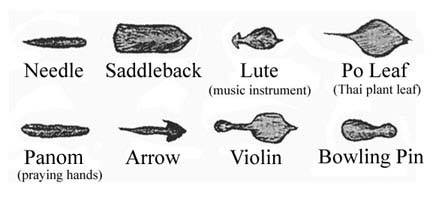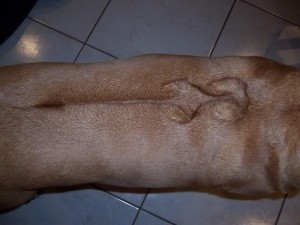
This thumbnail illustration at the left depicts the different ridge patterns that have been identified on Thai Ridgebacks, one of only three breeds that have a ridge (the other two are the Rhodesian Ridgeback and the Phu Quoc Ridgeback).
Ridges are fascinating (though we’re charmed by one innocent explanation given to children for ridges: It’s where God sews them up when he’s done stuffing them”).
Geneticists studying the ridge have concluded that ridges are due to a simple autosomal dominant trait, meaning that only one parent needs to have a ridge to pass it on to offspring.
Ridgeless Rhodesian Ridgebacks don’t carry the ridge gene at all, and as it was explained to us, c an’t produce ridged puppies any more than a Puli or Pekingese can. The ridge gene is a dominant mutation that makes ridged dogs unique.
an’t produce ridged puppies any more than a Puli or Pekingese can. The ridge gene is a dominant mutation that makes ridged dogs unique.
There’s a lot to know about ridges and breeders make a study of it. Ridge elements can include length and width, number and placement, whirls, crowns, and shape of the fan. We always defer to breed experts and would love for Ridge owners to weigh in here.
The photo of a Rhodesian Ridgeback with a double curl in her ridge at the right was found on Pinterest, but we think it may have originated on a discussion thread at Dogz Online. We’re happy to give full credit upon receipt of information.
